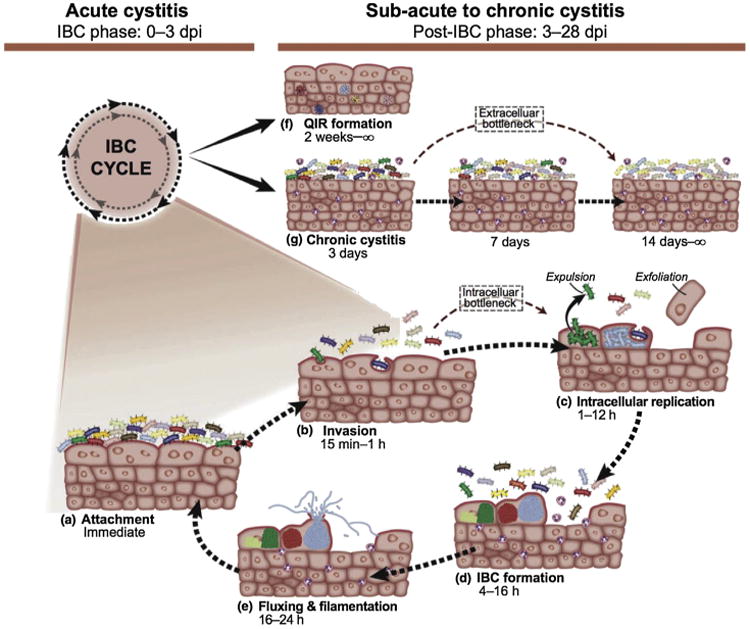Fig. 1.

Uropathogenic Escherichia coli model for acute cystitis, chronic cystitis, and quiescent intracellular reservoir formation: intracellular bacterial community (IBC) formation starts when bacteria attach onto the apical transitional epithelium of the bladder via type 1 pili. These bacteria are then enveloped and invade the epithelium – replicating and forming IBCs. As a host response to infection, the urothelium typically exfoliates, resulting in IBC liberation and IBC recreation in a clonal fashion. IBCs may also progress to quiescent intracellular reservoirs, which are not metabolically active and do not produce a measurable inflammatory response.
Note. From “Host-pathogen checkpoints and population bottlenecks in persistent and intracellular uropathogenic Escherichia coli bladder infection,” by T.J. Hannan, M. Totsika, K.J. Mansfield, K.H. Moore, M.A. Schembri, and S.J. Hultgren, 2012, FEMS Microbiol Rev, 3, p. 616–48. Copyright 2012, Nature Publishing Group. Reprinted with permission.
